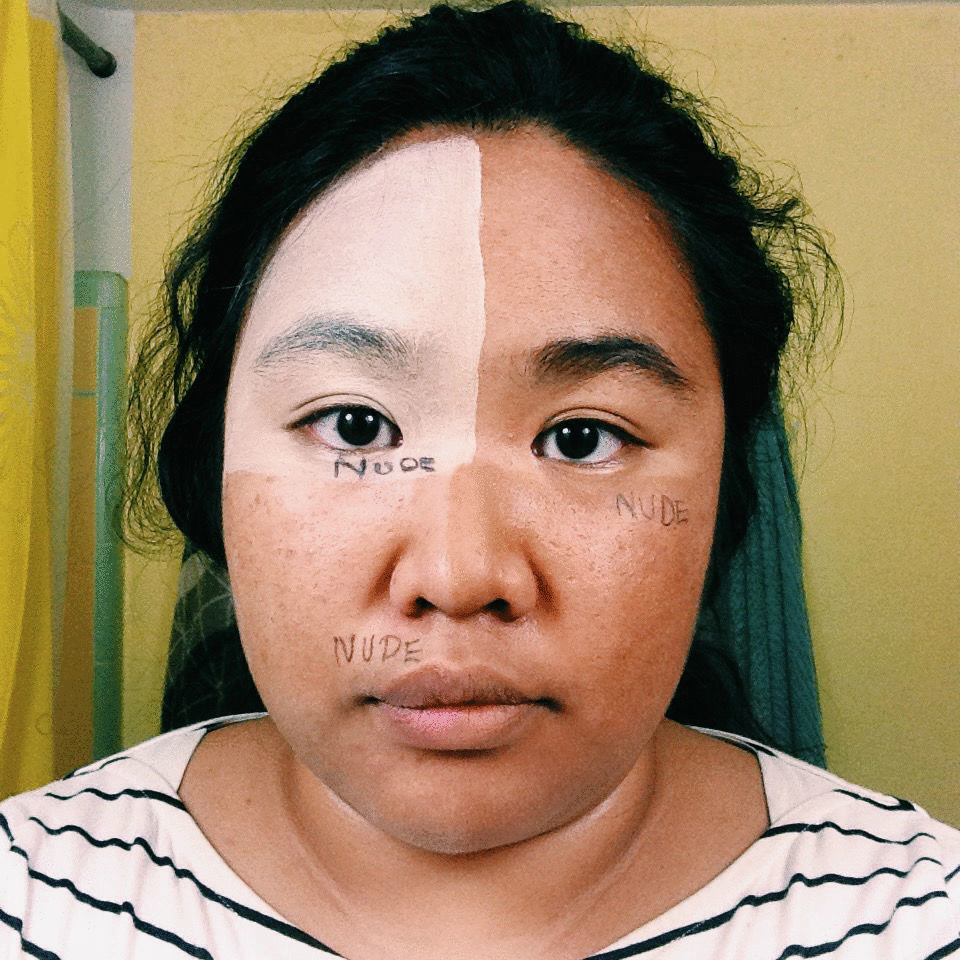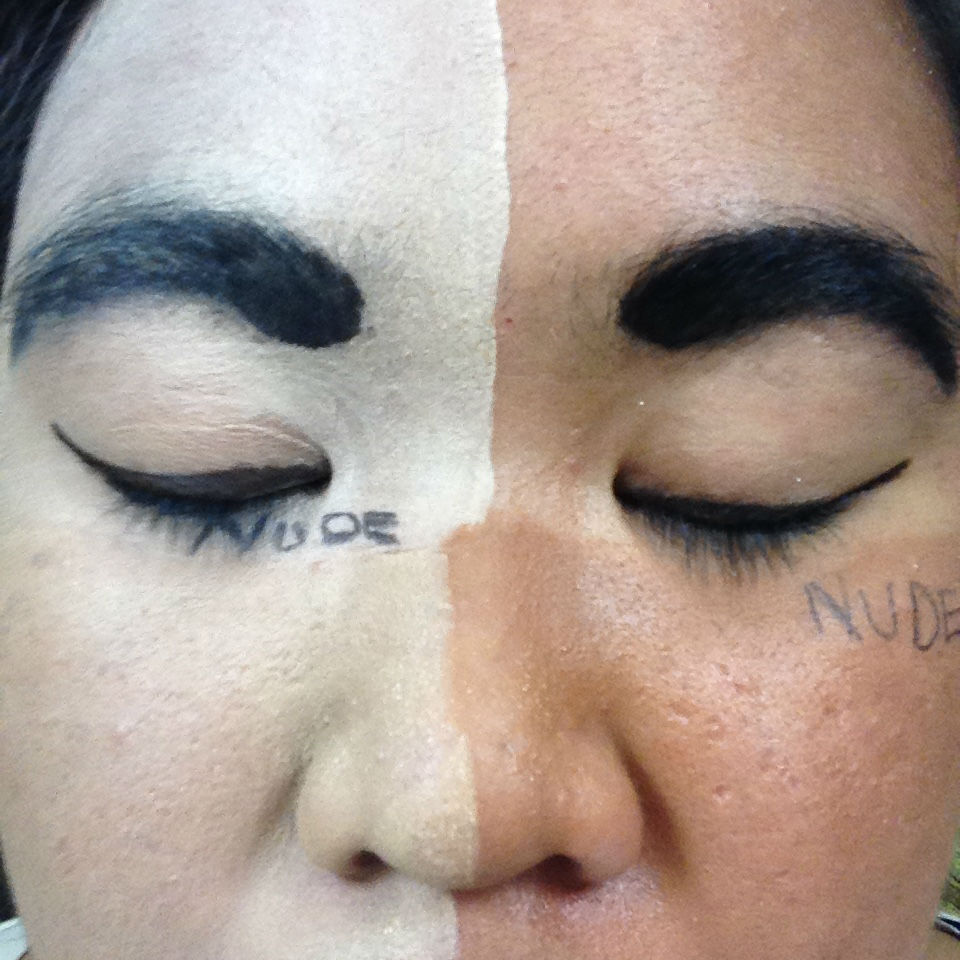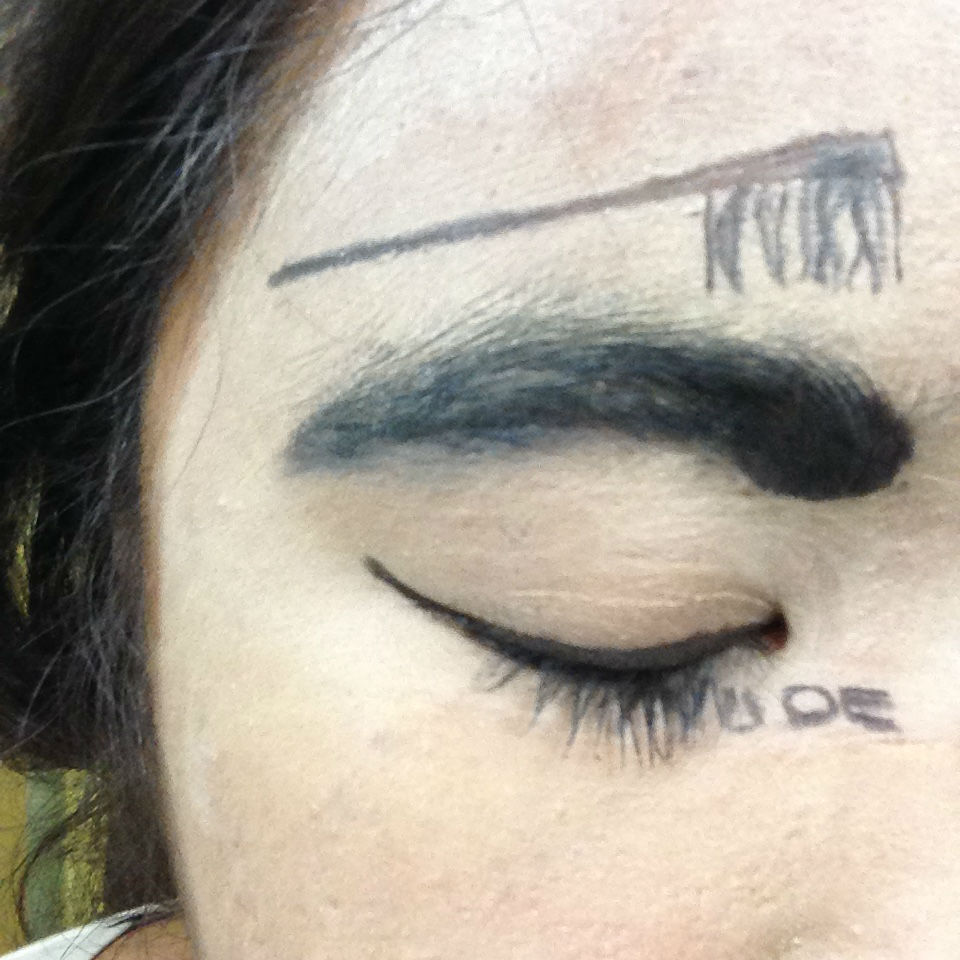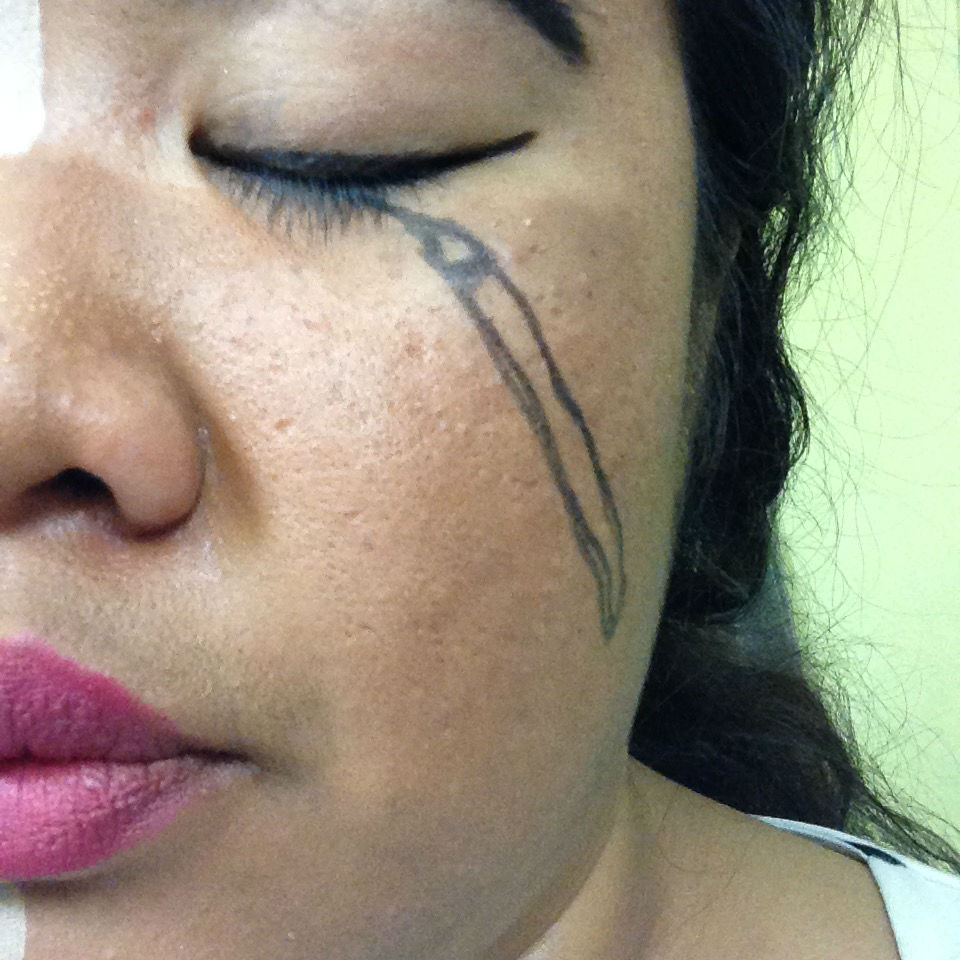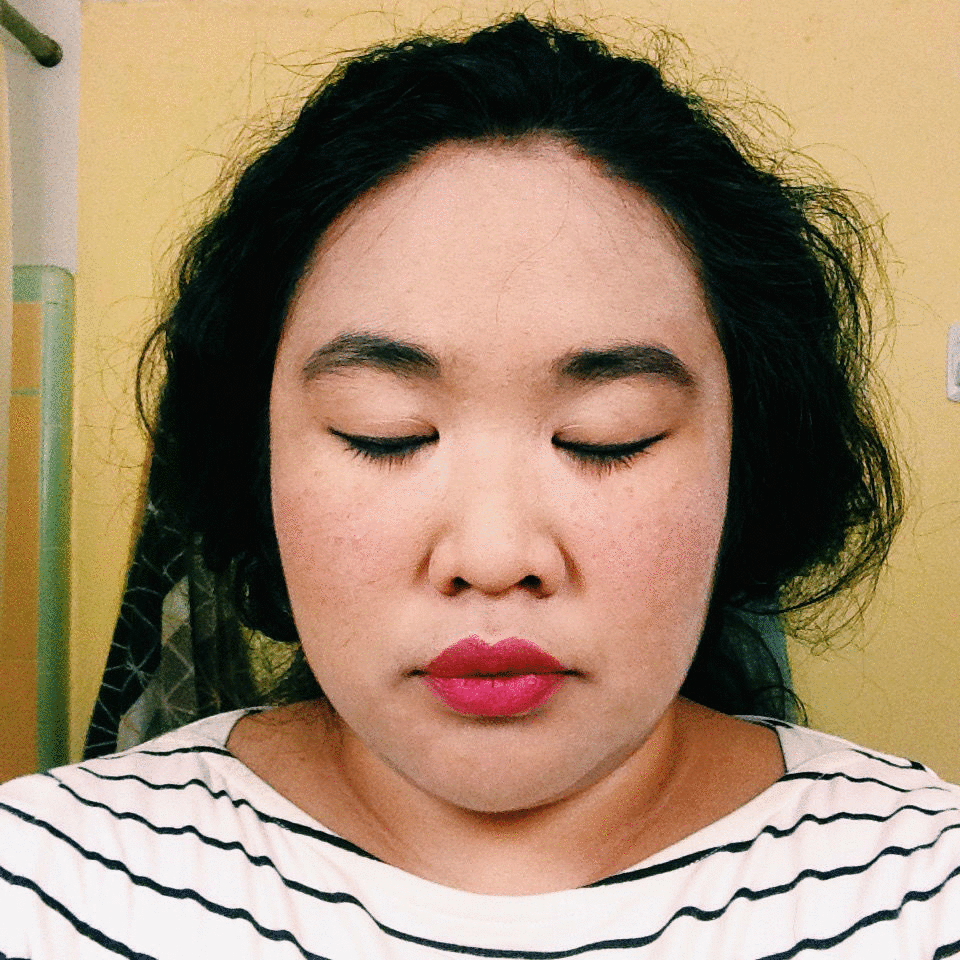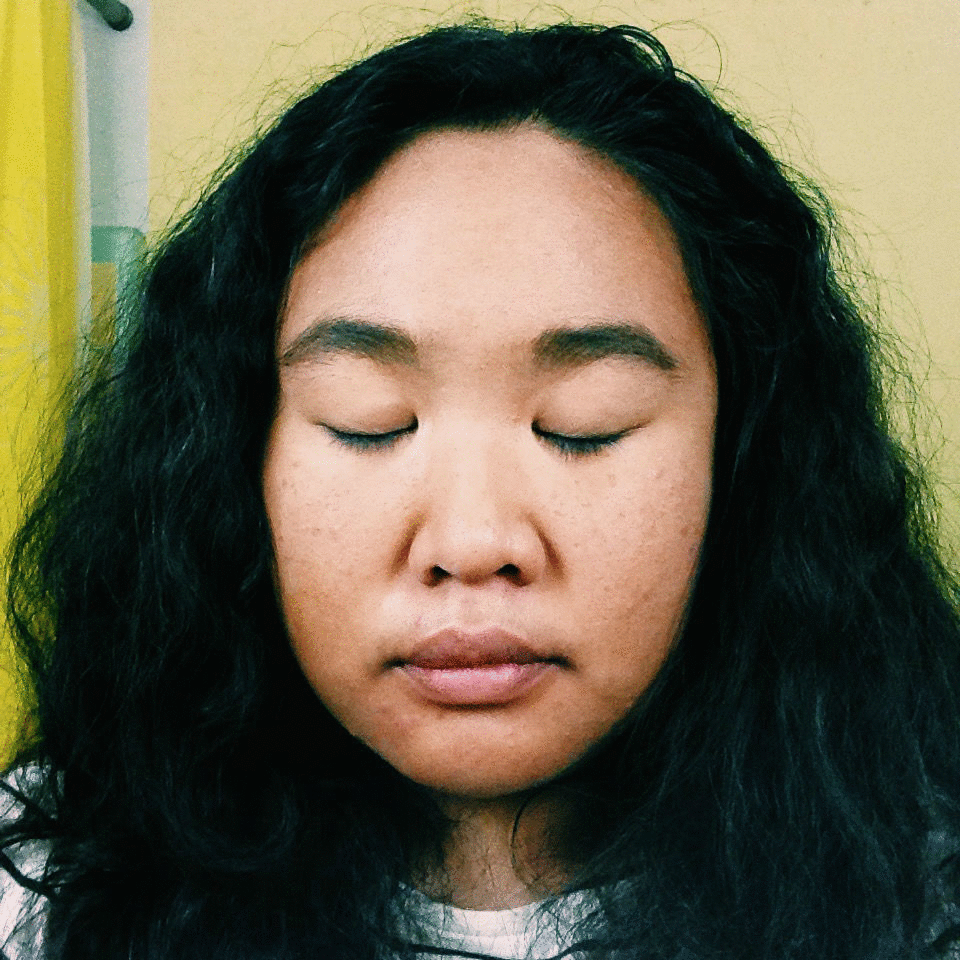by Deidrene Crisanto
When I was 8 years old, a girl named Reilly H. told me I was “too brown” to play with her. From that moment on, I was hyperaware of my “brownness” and I would spend the next decade and a half attempting to make myself “white” enough. Over those next few years, I would do things to decrease my “brownness” so that I would no longer be shooed away for having the wrong amount of melanin in my body: I would wear SPF 70 and long sleeves; I straightened my naturally curly hair and plucked, waxed, trimmed any other hair that seemed out of place; my mother gave me papaya whitening soap and lemon-oil based toners; I pinched my nose and my cheeks and chin trying in vain to sharpen my naturally round face; and I would pose and compose photos of myself to hide those parts of myself that felt wrong in front of a lens.
Years later, a close friend of mine would become an incredible talented make-up artist. Watching her at work as she created her designs, and seeing her handiwork on the faces of men and women of all different skin tones, facial shapes, and personalities, this friend showed me how make-up as a medium could celebrate and enhance those features I had tried to hide. Around this time, I also became interested in the representations of people of color in film, television, advertisements, and in social media. The people of color in the media were beautiful in ways that didn’t reflect my experience because those images were constituted in an aesthetic culture in which white was the default.
For people of color, the implications of the marketing of drugstore make-up allude to the implications of systemic prejudice. The reality is that for many people of color, “nude” and “neutral” make up products are hardly that. The ways in which we are photographed similarly reflect the complications of being “brown” or “black” in a ideologically “white-balanced” visual world.
I imitated some of the procedures from my white roommates’ daily make up routine and utilized the products that are part of that routine. The liquid foundations and BB creams that were borrowed from my roommates were marketed with names that included the words “nude” and “neutral”: “light nude”, “neutral beige”, “porcelain nude”, etc. The name of my preferred BB cream is “deep tint.” A quick perusal of a drugstore make-up section will reveal names for darker toned skin products like: “espresso”, “velvet”, “caramel”, “honey.” Fairer skin-tones might include words such as “porcelain”, “silk”, “ivory” and “luminous.” The names subtly reflect the celebration of white skin and the objectification of non-white skin: while pale shades of make-up are named after precious materials, brown and black shades of make-up are commonly named after food and drink.
I chose to photograph my face using a “color vibrant” pre-set filter available on a popular smartphone photography app to further interrogate the puzzling conundrum of the politicization of color. For four of the photos, I made .gifs alternating between a non-filtered picture and a ‘vibrantly’ filtered picture, to highlight the contrast between the different “neutral” tones. Notice what parts of my face are highlighted and emphasized in the various filtered shots, and take a moment to question what is pleasing to the eye and why that may be. On another popular photography app, the “beauty” filter sharpens the angles of my cheekbones, chin, and nose while widening my naturally almond shaped eyes. The pre-set software filters of popular smartphone apps imposed onto various shades of brown and black skin, and various brown and black facial features will often fail to capture the true lighting landscape. Consider how perhaps the white balance of the app filter is adjusted in relation to the color temperature of white skin. Striking the right color balance when taking “selfies” with my white friends is often difficult: one of us is washed out while the other is in shadow. This effect is more evident in photographs in which one subject is much darker than the other.
Lastly, a note on the cartoon-like drawings of tools used in the process to emphasize the artistic expression that can be exhibited through wearing, or not wearing, make up. This is part of the art piece that is the most self-serving aspect: as someone who does not wear cosmetic make-up on a regular basis, I wanted to emphasize that make-up is a highly expressive tool for the discretion of the artist. The cartoon-like drawings emphasize the isolated traits of my brown face that are the hardest for me to “hide”, so to speak. The ways in which the designated “Other” informs beauty standards reflects the exoticization of non-white bodies. The natural features of women of color are often appropriated in white beauty standards. My naturally thick eyebrows and my naturally thick lips have been the subject of teasing (thick eyebrows are easy targets for children to tease you for), fetishization (I have been approached by a number of men with lewd comments regarding my lips that I will not repeat here), and various micro-aggressions (ranging from “I wish I looked as exotic as you!” to the painfully common suggestion that I don’t look like a “real” Asian). These micro-aggressions regarding the noticeable parts of my face that I try to hide directly contrast the ways in which thick eyebrows and thick lips are “trends” among white cosmetic practices (an example would be the way in which Cara Delevingne’s dramatic brow lines, and Kylie Jenner’s recent “lip challenge”).
By exploring the prominence of those features that make me feel most insecure, rather than hiding them, I have become more able to fully accept and embrace them.
For me, and many other women of color “nude” and “neutral” products are anything but. ”Nude” and “neutral” imply the lack of strongly marked or positive characteristics or features, a true shade, or a median standard. To designate white skin in as the median standard inherently implies that those with non-white skin are deviant to that standard, rather than recognizing the nuances of skin color and its politics. The multitudinous ways in which a woman of color can be beautiful require our respect and attention, and a mindful interrogation of American beauty standards. I am no less beautiful than a woman with whiter skin than mine, and I am no more beautiful than a woman with darker skin than mine.
I often try to spend as little time looking in the mirror as I can and, previously, I would choose to not take pictures of myself; I would often feel disappointed in the way my beauty feels deviant or divergent, and sometimes invalid. By taking the time to interrogate the cultural perceptions that made me feel this way through this creative treatment, I was able to reintroduce myself to the features and traits that make me who I am. In time, and through a combination of practices, I am coming to feel truly beautiful according to standards that are my own: skeptical of popular and social media representations of women in color in white America, and unmarred by the effects of drugstore make-up aisles and smartphone camera filters.

